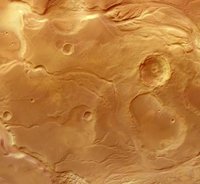
To search for evidence of life, we must first identify landing sites where environmental conditions had been favorable for life or its chemical precursors. Those conditions must also have favored the geological preservation of any remains. The Mars Exploration Rovers found deposits from evaporated saline water bodies and hydrothermal systems; such environments might have been habitable. The rovers identified sulfates, carbonates and silica; these mineral groups can preserve evidence of environments and life. Spirit rover found ultramafic rocks (Fe- and Mg-rich, relatively Si-poor); these can react with water to produce hydrogen and other products that can sustain microbes. Both Spirit and Opportunity found evidence that subsurface liquid water had persisted sometime in the distant past. Recent orbital observations of phyllosilicates (clay minerals) also indicate the former presence of near-surface water. These diverse, extensive sedimentary deposits indicate that ancient Mars hosted a wide variety of potentially habitable aqueous environments.
 Getting Under Europa’s Skin
Getting Under Europa’s Skin Tracing Formation and Evolution of Outer Solar System Bodies Through Stable Isotopes and Noble Gas Abundances
Tracing Formation and Evolution of Outer Solar System Bodies Through Stable Isotopes and Noble Gas Abundances Photosynthesis, a Planetary Revolution
Photosynthesis, a Planetary Revolution Xenon: King of the Gases
Xenon: King of the Gases